Peter Dornauf – 16 December, 2024
Te Maari has created a series of stuffed dolls, made of felt (employing hand spun Shetland, Corriedale and merino wool), complete with knitted apparel. They are all the same size, approximately 30 cm tall (your average cuddly toy); but what makes these sculptures, Manu figures, special is the treatment and symbolism loaded onto them so they carry the weight of social and moral significance.
Kirikiriroa
Te Maari
Epicenter (E)
A solo exhibtion by Te Maari in collaboration with Mokopōpaki
27 November - 21 December 2024
“Make it new” was the modernist mantra of the early twentieth century and despite all the subsequent critiques of modernism and its replacement with another ism, the call to be to fresh and original still both applies and is practiced by the avant-garde today.
The Dadaists made it new, as did the Pop artists, and there are elements of both aesthetics embodied in the craft of artist, Te Maari and her most recent show, Epicenter (E), at Laree Payne Gallery. Yet who would have thought that stuffed ‘toys’ (knitted dolls), could work as art objects? Well, we’ve had knitted food and knitted Māori Meeting Houses, so why not?
I love this kind of bold inventiveness that goes outside the boundaries, abolishes hierarchies, that sees the employment of the ‘low rent’ and so-called banal object in the services of art. The Dadaists did it first and a long time ago. It seems like we are just catching up.
Te Maari has created a series of stuffed dolls, made of felt (employing hand spun Shetland, Corriedale and merino wool), complete with knitted apparel. They are all the same size, approximately 30 cm tall (your average cuddly toy); but what makes these sculptures, Manu figures, special is the treatment and symbolism loaded on to them, so they carry the weight of social and moral significance.
These are humanoid creations, but they represent, by their colour, design and configuration, New Zealand native birds, and they are named as such. So, there is already an element of anthropomorphism operating here. The colour and texture of each bird is incorporated into the fabric, but beyond that there are no obvious or blatant bird-like shapes and formations going on. The dolls/sculptures all have similar configured faces and bodies, but with slightly different garments and outfits together with embroidered patterns that operate as moko-like forms on their faces.
They are a delight to behold and beautifully staged in the gallery arena, each one suspended in space on invisible cord and caged inside small Perspex platforms, which affords a kind of otherworldly spectacle to these pieces, placed as they are in a parallel line afloat in the middle of the gallery.
So, what’s the point?
Birds presented as human have a certain discombobulating effect, as does any anthropomorphic trope. We, the viewers, are provided with another lens through which to look at the familiar, which makes it importantly unfamiliar. And the lens here is to shift the category so that we apprehend the birds as something equal to and like us. This can be a useful exercise, particularly in a world of rampant consumerism attendant on the exploitation of the natural habitat. One of the Manu figures has embroidered tear drops coursing down the side of its face.
At another level, given the artist is Māori, and together with the presence of identifiable Māori design motifs on the sculptures, one can read into the work a commentary on the effect of colonisation, not only on the native bird population, but also on the native human population.
A further layer is added with the Manu sculptures being given names: Sammy Haupapa, Polly Wiremu and the like, providing a more personal touch. And then beyond that, each work comes, alongside the title, with a given location - Davenport, the Bowery, Peachgrove Road, Broadway, etc. This is a cosmopolitan bunch where the famous and not-so-famous places on the world map share the same territory—and thus a democratising element enters the equation.
This is complemented by the fact that there is a mix of native and introduced birds referred to in the collection - starlings, birds from Europe and Asia - sit alongside kingfisher, kakapo, pukeko, huia and stitch bird, a nice and appropriately inclusive touch in today’s conflicted political landscape where some play a grievous game of identity politics. We are all the same species: endangered humans, irrespective of colour, identity or race. There’s a lot going on here and best of all, the delivery.
This is a clever show, seemingly unassuming, charming and winsome at first glance, but coming with a communique that can challenge and unsettle. This it does so in an adroit and quiet manner. Shrewd and astute stuff.
Peter Dornauf
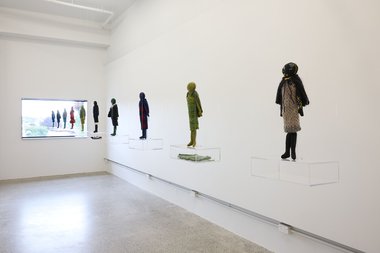
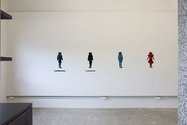
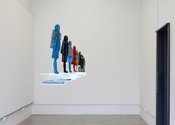










 Two Rooms presents a program of residencies and projects
Two Rooms presents a program of residencies and projects Advertising in this column
Advertising in this column
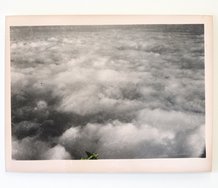
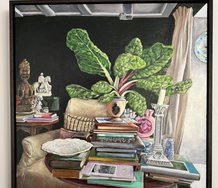
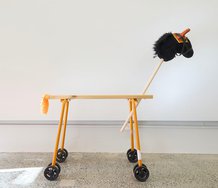
This Discussion has 0 comments.
Comment
Participate
Register to Participate.
Sign in
Sign in to an existing account.